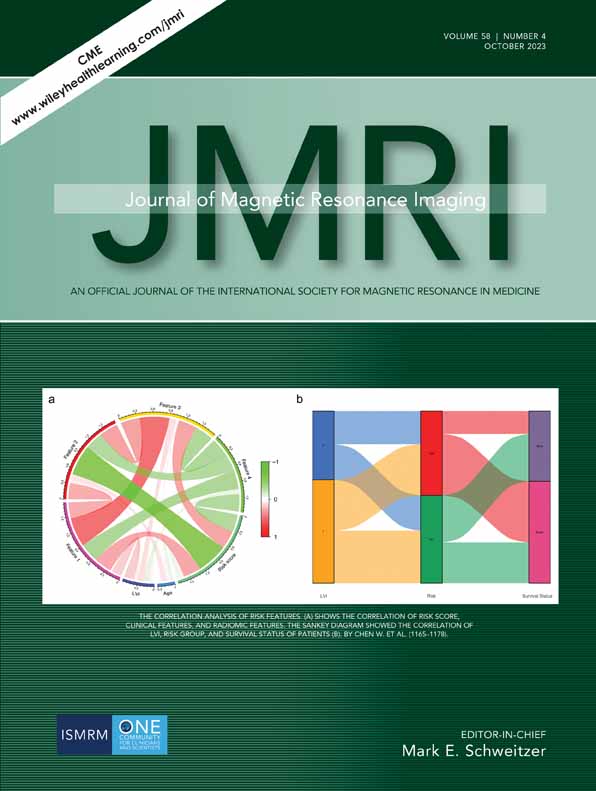Dynamic Contrast-Enhanced MRI in Abdominal Aortic Aneurysms as a Potential Marker for Disease Progression
Grant sponsor: VA Merit Award; grant number: I01CX002071-01A1.
Abstract
Background
Abdominal aortic aneurysms (AAAs) may rupture before reaching maximum diameter (Dmax) thresholds for repair. Aortic wall microvasculature has been associated with elastin content and rupture sites in specimens, but its relation to progression is unknown.
Purpose
To investigate whether dynamic contrast-enhanced (DCE) MRI of AAA is associated with Dmax or growth.
Study Type
Prospective.
Population
A total of 27 male patients with infrarenal AAA (mean age ± standard deviation = 75 ± 5 years) under surveillance with DCE MRI and 2 years of prior follow-up intervals with computed tomography (CT) or MRI.
Field Strength/Sequence
A 3-T, dynamic three-dimensional (3D) fast gradient-echo stack-of-stars volumetric interpolated breath-hold examination (Star-VIBE).
Assessment
Wall voxels were manually segmented in two consecutive slices at the level of Dmax. We measured slope to 1-minute and area under the curve (AUC) to 1 minute and 4 minutes of the signal intensity change postcontrast relative to that precontrast arrival, and, Ktrans, a measure of microvascular permeability, using the Patlak model. These were averaged over all wall voxels for association to Dmax and growth rate, and, over left/right and anterior/posterior quadrants for testing circumferential homogeneity. Dmax was measured orthogonal to the aortic centerline and growth rate was calculated by linear fit of Dmax measurements.
Statistical Tests
Pearson correlation and linear mixed effects models. A P value <0.05 was considered statistically significant.
Results
In 44 DCE MRIs, mean Dmax was 45 ± 7 mm and growth rate in 1.5 ± 0.4 years of prior follow-up was 1.7 ± 1.2 mm per year. DCE measurements correlated with each other (Pearson r = 0.39–0.99) and significantly differed between anterior/posterior versus left/right quadrants. DCE measurements were not significantly associated with Dmax (P = 0.084, 0.289, 0.054 and 0.255 for slope, AUC at 1 minute and 4 minutes, and Ktrans, respectively). Slope and 4 minutes AUC significantly associated with growth rate after controlling for Dmax.
Conclusion
Contrast uptake may be increased in lateral aspects of the AAA. Contrast enhancement 1-minute slope and 4-minutes AUC may be associated with a period of recent AAA growth that is independent of Dmax.
Evidence Level
3.
Technical Efficacy
Stage 2.




